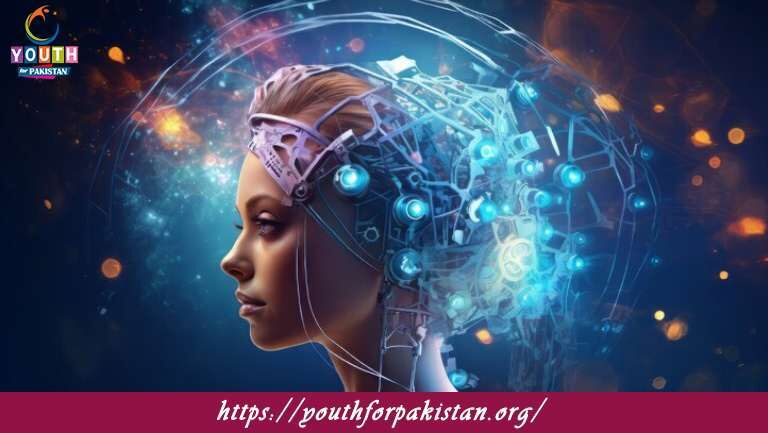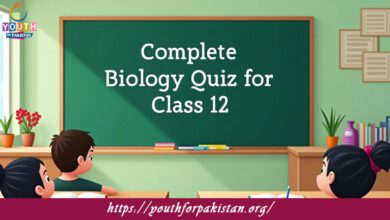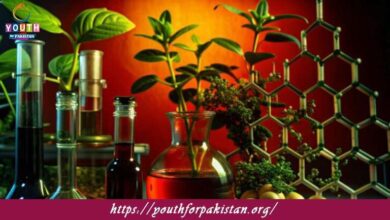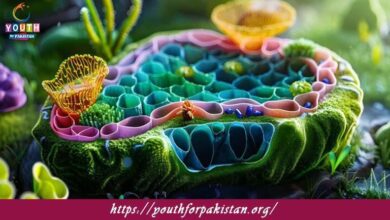12th Class Biology Chapter 17 MCQs with Answers

Prepare for excellence with 12th Class Biology Chapter 17 MCQs Coordination and Control. These questions delve into nervous systems, hormones, and response mechanisms, ensuring a clear grasp of vital concepts. Trending keywords like coordination biology quiz, nervous system MCQs, and hormonal control prep boost your learning and Google visibility. Strengthen your knowledge to ace competitive and board exams with confidence!
The central nervous system (CNS) consists of:
a) Brain and spinal cord
b) Nerves and ganglia
c) Sensory organs
d) Endocrine glands
Which part of the brain is responsible for regulating basic life functions such as breathing and heart rate?
a) Cerebrum
b) Cerebellum
c) Medulla oblongata
d) Hypothalamus
The autonomic nervous system controls involuntary actions. It is divided into:
a) Sympathetic and parasympathetic divisions
b) Somatic and autonomic divisions
c) Sensory and motor divisions
d) Central and peripheral divisions
Which gland is often called the “master gland” as it regulates other endocrine glands?
a) Thyroid gland
b) Pituitary gland
c) Adrenal gland
d) Pancreas
The fight-or-flight response is activated by the:
a) Sympathetic nervous system
b) Parasympathetic nervous system
c) Central nervous system
d) Peripheral nervous system
Which of the following is NOT a function of the nervous system?
a) Regulating body temperature
b) Facilitating muscle contraction
c) Producing hormones
d) Processing sensory information
The gap between two neurons where chemical signals are transmitted is called:
a) Synapse
b) Axon
c) Dendrite
d) Myelin sheath
Which part of the brain is responsible for coordinating voluntary movements and balance?
a) Cerebrum
b) Cerebellum
c) Medulla oblongata
d) Hypothalamus
Which division of the nervous system controls voluntary movements and skeletal muscles?
a) Sympathetic division
b) Parasympathetic division
c) Somatic division
d) Autonomic division
The adrenal glands produce hormones that are involved in the body’s response to stress. One of these hormones is:
a) Insulin
b) Epinephrine (adrenaline)
c) Estrogen
d) Testosterone
Which part of the brain plays a key role in memory, learning, and emotions?
a) Cerebrum
b) Cerebellum
c) Medulla oblongata
d) Hypothalamus
The sympathetic nervous system is responsible for:
a) Rest and digest response
b) Slowing heart rate
c) Fight-or-flight response
d) Constricting pupils
Which hormone is produced by the pancreas and helps regulate blood sugar levels?
a) Insulin
b) Epinephrine
c) Cortisol
d) Thyroxine
Which part of the brain regulates body temperature, hunger, and thirst?
a) Cerebrum
b) Cerebellum
c) Medulla oblongata
d) Hypothalamus
The parasympathetic nervous system is responsible for:
a) Rest and digest response
b) Slowing heart rate
c) Fight-or-flight response
d) Dilating pupils
Which of the following is NOT a function of the endocrine system?
a) Regulating metabolism
b) Controlling growth and development
c) Transmitting electrical signals
d) Regulating blood sugar levels
The myelin sheath is a protective covering around:
a) Axon
b) Dendrite
c) Cell body
d) Synapse
Which gland is located in the neck and produces hormones that regulate metabolism?
a) Thyroid gland
b) Pituitary gland
c) Adrenal gland
d) Pancreas
Parkinson’s disease is a neurodegenerative disorder that affects which part of the brain?
a) Cerebrum
b) Cerebellum
c) Medulla oblongata
d) Substantia nigra
The release of neurotransmitters into the synapse is triggered by:
a) Electrical impulses
b) Hormones
c) Light
d) Sound
The hormones produced by the adrenal glands help the body respond to stress by:
a) Increasing blood pressure
b) Increasing heart rate
c) Constricting blood vessels
d) All of the above
The primary visual cortex, responsible for processing visual information, is located in which lobe of the brain?
a) Frontal lobe
b) Parietal lobe
c) Temporal lobe
d) Occipital lobe
Which part of the brain is involved in regulating body temperature, hunger, and thirst?
a) Cerebrum
b) Cerebellum
c) Medulla oblongata
d) Hypothalamus
Which division of the nervous system controls involuntary actions like heart rate and digestion?
a) Sympathetic division
b) Parasympathetic division
c) Somatic division
d) Autonomic division
The “flight-or-fight” response is associated with the activation of which part of the nervous system?
a) Sympathetic nervous system
b) Parasympathetic nervous system
c) Central nervous system
d) Peripheral nervous system
Which gland is known as the “master gland” of the endocrine system?
a) Thyroid gland
b) Pituitary gland
c) Adrenal gland
d) Pancreas
The autonomic nervous system is responsible for:
a) Voluntary movements
b) Involuntary actions
c) Sensory perception
d) Conscious thought
What is the primary function of the cerebellum?
a) Memory storage
b) Decision-making
c) Coordination of movement
d) Language processing
Which part of the brain controls motor functions, speech, and higher cognitive functions?
a) Cerebrum
b) Cerebellum
c) Medulla oblongata
d) Hypothalamus
The sympathetic nervous system is responsible for:
a) Rest and digest response
b) Slowing heart rate
c) Fight-or-flight response
d) Constricting pupils
Which hormone is produced by the pancreas and helps regulate blood sugar levels?
a) Insulin
b) Epinephrine
c) Cortisol
d) Thyroxine
Which part of the brain regulates body temperature, hunger, and thirst?
a) Cerebrum
b) Cerebellum
c) Medulla oblongata
d) Hypothalamus
The parasympathetic nervous system is responsible for:
a) Rest and digest response
b) Slowing heart rate
c) Fight-or-flight response
d) Dilating pupils
Which of the following is NOT a function of the endocrine system?
a) Regulating metabolism
b) Controlling growth and development
c) Transmitting electrical signals
d) Regulating blood sugar levels
The myelin sheath is a protective covering around:
a) Axon
b) Dendrite
c) Cell body
d) Synapse
Which gland is located in the neck and produces hormones that regulate metabolism?
a) Thyroid gland
b) Pituitary gland
c) Adrenal gland
d) Pancreas
Parkinson’s disease is a neurodegenerative disorder that affects which part of the brain?
a) Cerebrum
b) Cerebellum
c) Medulla oblongata
d) Substantia nigra
The release of neurotransmitters into the synapse is triggered by:
a) Electrical impulses
b) Hormones
c) Light
d) Sound
The hormones produced by the adrenal glands help the body respond to stress by:
a) Increasing blood pressure
b) Increasing heart rate
c) Constricting blood vessels
d) All of the above
The primary visual cortex, responsible for processing visual information, is located in which lobe of the brain?
a) Frontal lobe
b) Parietal lobe
c) Temporal lobe
d) Occipital lobe
Which part of the brain is involved in regulating body temperature, hunger, and thirst?
a) Cerebrum
b) Cerebellum
c) Medulla oblongata
d) Hypothalamus
Which division of the nervous system controls involuntary actions like heart rate and digestion?
a) Sympathetic division
b) Parasympathetic division
c) Somatic division
d) Autonomic division
The “flight-or-fight” response is associated with the activation of which part of the
nervous system?
a) Sympathetic nervous system
b) Parasympathetic nervous system
c) Central nervous system
d) Peripheral nervous system
Which gland is known as the “master gland” of the endocrine system?
a) Thyroid gland
b) Pituitary gland
c) Adrenal gland
d) Pancreas
The autonomic nervous system is responsible for:
a) Voluntary movements
b) Involuntary actions
c) Sensory perception
d) Conscious thought
What is the primary function of the cerebellum?
a) Memory storage
b) Decision-making
c) Coordination of movement
d) Language processing
Which part of the brain controls motor functions, speech, and higher cognitive functions?
a) Cerebrum
b) Cerebellum
c) Medulla oblongata
d) Hypothalamus
The sympathetic nervous system is responsible for:
a) Rest and digest response
b) Slowing heart rate
c) Fight-or-flight response
d) Constricting pupils
Which hormone is produced by the pancreas and helps regulate blood sugar levels?
a) Insulin
b) Epinephrine
c) Cortisol
d) Thyroxine
Which part of the brain regulates body temperature, hunger, and thirst?
a) Cerebrum
b) Cerebellum
c) Medulla oblongata
d) Hypothalamus
The parasympathetic nervous system is responsible for:
a) Rest and digest response
b) Slowing heart rate
c) Fight-or-flight response
d) Dilating pupils
Which of the following is NOT a function of the endocrine system?
a) Regulating metabolism
b) Controlling growth and development
c) Transmitting electrical signals
d) Regulating blood sugar levels
The myelin sheath is a protective covering around:
a) Axon
b) Dendrite
c) Cell body
d) Synapse
Which gland is located in the neck and produces hormones that regulate metabolism?
a) Thyroid gland
b) Pituitary gland
c) Adrenal gland
d) Pancreas
Parkinson’s disease is a neurodegenerative disorder that affects which part of the brain?
a) Cerebrum
b) Cerebellum
c) Medulla oblongata
d) Substantia nigra
The release of neurotransmitters into the synapse is triggered by:
a) Electrical impulses
b) Hormones
c) Light
d) Sound
Which division of the nervous system controls involuntary actions like heart rate and digestion?
a) Sympathetic division
b) Parasympathetic division
c) Somatic division
d) Autonomic division
If you are interested to enhance your knowledge regarding Physics, Chemistry, Biology, and Computer please click on the link of each category, you will be redirected to dedicated website for each category.




